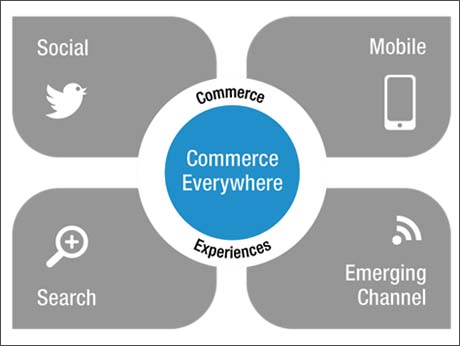
Mumbai, November 9, 2015: Here's an irony! India is the fastest growing digital commerce market in Asia/Pacific, yet Digital Commerce accounts for less than 1 percent of total retail sales, finds a Gartner study. The analyst suggests that customer experience, product range, delivery, payment and customer service are the top five things Indian digital commerce players should focus on to grow their business.
Says Gene Alvarez, Managing Vice President at Gartner. “India represents a $7 billion market, growing at more than 40 percent every year. Currently B2C commerce leads the market in India, while B2B is limited to organizations that drive online sales while trying to cut costs in dealing with their partners and distributors.”
Mobile commerce is a primary channel for digital commerce in India. Over 40 percent of digital commerce transactions came from a mobile device in 2014, and it is likely to exceed 50 percent in 2015. Due to the low Internet penetration in India, the country is leapfrogging the PC, and consumers are using mobile as the primary channel for online shopping.
The top five things Indian digital commerce players should focus on to drive growth:
Customer Experience: This is the most important differentiator of a digital commerce service as price becomes transparent across sites. Providers that can design a compelling user interface (UI), personalize landing pages, search results and product feeds based on the shopper’s behaviour, and effectively engage shoppers to make them loyalty customers, will win over those that cannot.
Product Range: Due to the nascent nature of India’s digital commerce market, product range and choices are still quite limited even on major marketplaces. Providers will need to expand the product ranges to make the service attractive to shoppers through organic growth and partnership. Focusing on a few categories, such as consumer electronics, fashion and grocery can also be the right strategy to deeply penetrate a product segment and become the go-to site for that category.
Delivery: This is a key challenge in India given the less developed logistic infrastructure and the lack of last-mile connectivity in remote areas. Providers will have to partner with multiple logistic providers to leverage their strengths in national, regional and local delivery, as well as with retail stores as pickup stations to offer reasonable delivery speed and costs. They also need to consider putting in place reverse logistics for returns, which significantly impacts the customer experience.
Payment: Payment has a big impact on the conversion rate, and a frictionless payment process greatly helps increase digital commerce sales. India has relatively low credit card penetration, and most of digital commerce is done via cash-on-delivery. Despite regulatory challenges, digital commerce providers should work with payment providers to offer a frictionless payment experience.
Customer Service: Besides offering immediate help on site and via the contact centre, and making processes and cost information transparent, digital commerce providers should think carefully about their return strategy. A generous return strategy encourages sales especially for categories such as fashion and consumer electronics.
____________________________________________________________________
Digital commerce is the buying and selling of goods and services using the Internet,
mobile networks and commerce infrastructure.It includes the marketing activities that
support these transactions, including people, processes and technologies to execute
the offering of development content, analytics, promotion, pricing, customer acquisition
and retention, and customer experience at all touchpoints throughout the customer
buying journey.
_____________________________________________________________________